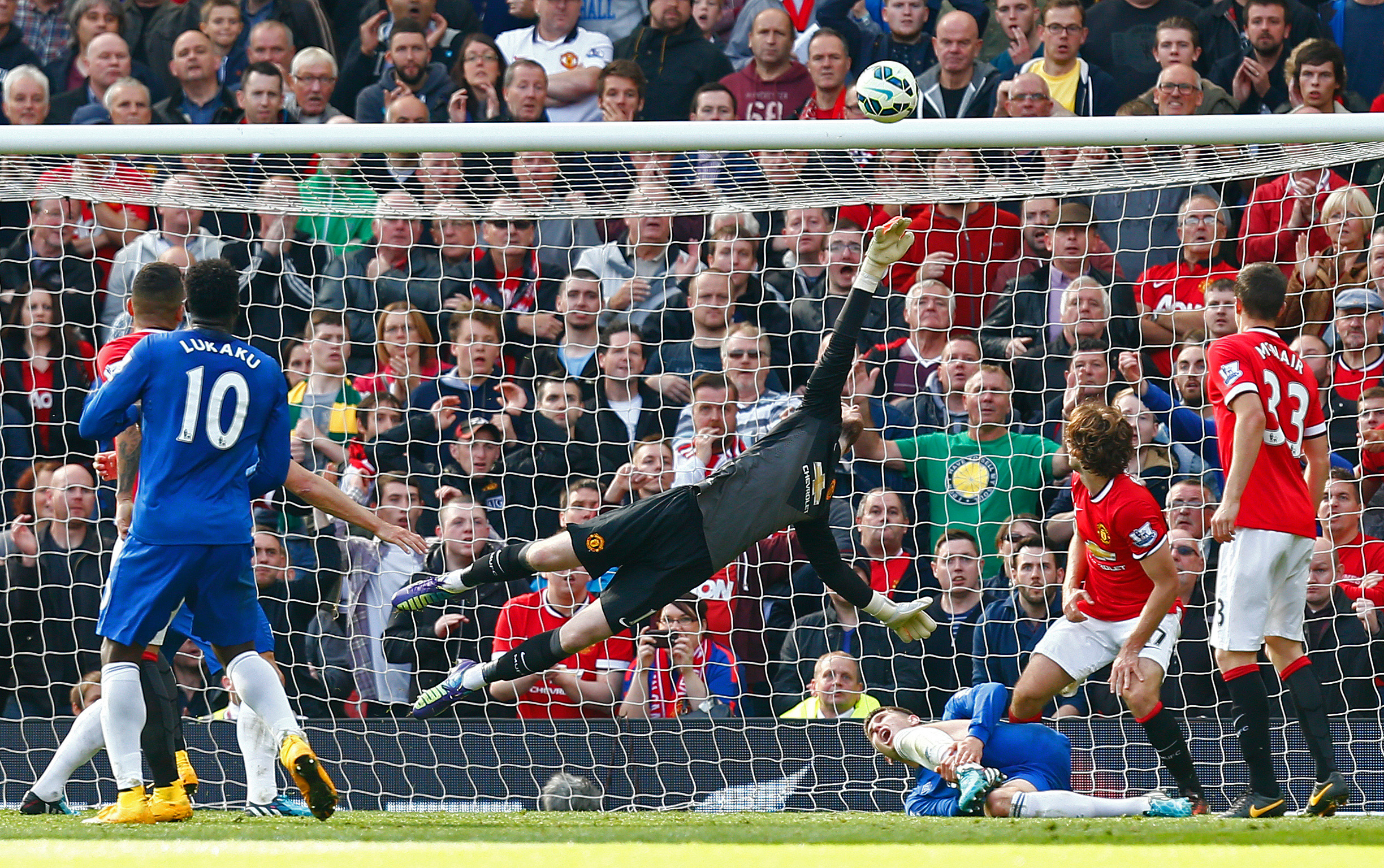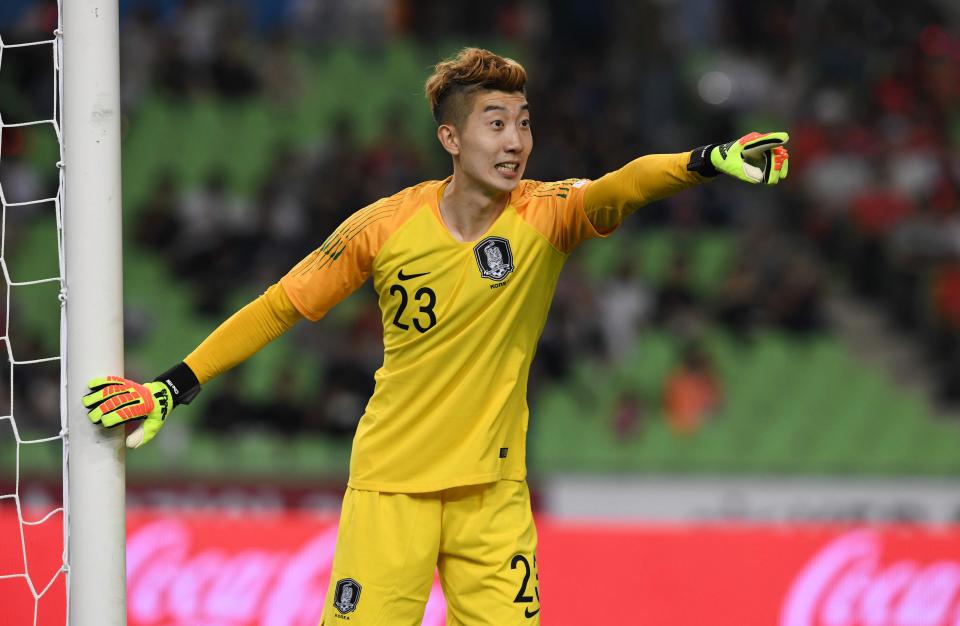With one World Cup ending, the green light is officially given to project the next top goalkeepers on the world’s stage. While no nation is head over shoulders for winning the 2022 competition - France leads the pack with best odds to win the next World Cup at 17% - there are already some noticeable gaps in talent when comparing the goalkeeping pools. Of course it’s impossible to predict with certainty on which goalkeeper will be the starter for a nation four years from now, so this list is taking into account the entire stable of goalkeepers, not just the likely number one.
1. Spain
Photo belongs to Reuters
Contenders:
David de Gea (Manchester United) - 27
Kepa Arrizabalaga (Chelsea) - 23
Sergio Rico (Sevilla) - 24
Pau López (Real Betis) - 23
Fernando Pacheco (Alavés) - 26
Bill says: While de Gea critics will be quick to point out his performance from the last World Cup, it’s hard to gauge any goalkeeper on four games. It was truly a poor goal in the opening match but de Gea has handled pressure well in the past and will continue to amaze fans for the steadiness he’ll provide Manchester United this season. And if worst comes to worst, Spain has the luxury of leaning on up-and-coming goalkeepers. There's a reason Chelsea brought in Arrizabalaga ASAP, and on a pretty penny too. Spanish goalkeepers are known for the abilities with their feet but their quick mobility and fantastic reflex saves are something to expect from Spain's starter in 2022, whoever it may be.
2. Germany
Photo belongs to Getty
Contenders:
Marc ter Stegen (Barcelona) - 26
Bernd Leno (Arsenal) - 26
Manuel Neuer (Bayern Munich) - 32
Timo Horn (1. FC Köln) - 25
Bill says: Most countries wouldn’t be against Manuel Neuer starting for them at 36 years old, but right now it’s ter Stegen’s job to lose. The Barcelona goalkeeper has patiently waited for his tenure with the national team and he’s in prime position to continue to bolster his résumé even further. While Neuer could very well still earn a World Cup invite come 2022, Bernd Leno and Timo Horn are playing at levels where they could theoretically establish themselves over the Bayern Munich goalkeeper. It's been a while since Germany has struggled to field a competent goalkeeper at the world stage and 2022 will be no different.
3. Portugal
Contenders:
Anthony Lopes (Lyon) - 27
Rui Patrício (Wolverhampton) - 30
José Sá (FC Porto) - 25
Bruno Varela (Benfica) - 23
Cláudio Ramos (Tondela) - 26
Joel Pereira (Vitória de Setúbal) - 22
Pedro Silva (Tondela) - 21
Bill says: Some are already writing off Portugal as a contender next World Cup but if there’s a weakness in their lineup, it won’t be found in their goalkeeping. Rui Patrício did a wonderful job of setting a high standard for Portuguese goalkeeping at the 2018 World Cup and a number of young goalkeepers are looking to follow suit going forward. Sá’s ability comes with little question but if he can get his club situation sorted out, he should be contesting with Patrício and Lopes down the line. Lopes enters his sixth season as a starter for Lyon and returns to Champions League play after the French club missed last year’s contest.
4. Italy
Contenders:
Mattia Perin (Juventus) - 25
Marco Sportiello (Atalanta) - 26
Gianluigi Donnarumma (AC Milan) - 19
Alessio Cragno (Cagliari) - 24
Emil Audero (Juventus) - 21
Simone Scuffet (Udinese) - 22
Alex Meret (Napoli) - 21
Alessandro Plizzari (AC Milan) - 18
Bill says: Many are expecting Italy to replace Gianluigi Buffon with Donnarumma moving forward but it’s a crowded field he’ll have to beat out. Perin and Sportiello are entering the peak of their careers while there are many other young talented goalkeepers littered across Italy. It’ll be a tightly contested battle that could easily come down to the run-up year to the Cup. Perin already has a heavy challenge battling for the number one spot at Juventus, but if he can win that out, he should do will to follow in Buffon’s footsteps.
5. Brazil
Contenders:
Alisson (Liverpool) - 25
Ederson (Manchester City) - 24
Rafael (Napoli) - 28
Bill says: Unlike Italy, Brazil doesn’t have an extensive top-tier goalkeeping core but with Alisson and Ederson competing for the top spot, it’s easy to think “Who else do you need?” Alisson started in the 2018 World Cup - his performance largely forgettable yet not poor - but the competition between the two has a strong chance of extending all the way until the 2026 World Cup as well. With Alisson joining Liverpool this summer, fans would do well to brace themselves for the longstanding narrative of comparing the two goalkeepers for many years to come.

















